Kotsanas’ wooden reproduction of the stomachion

Kotsanas’ wooden reproduction of the stomachion A modern reproduction of Archimedes’ stomachion Copyright: Collection and Archive of Kotsanas Museum of Ancient Greek Technology (www.kotsanas.com) – The image shows a reproduction of the stomachion game located in the K. Kotsanas Museum of Ancient Greek Technology in Heraklion, Crete. This wooden artefact consists of a square geometric […]
The geometric design of the stomachion diagram
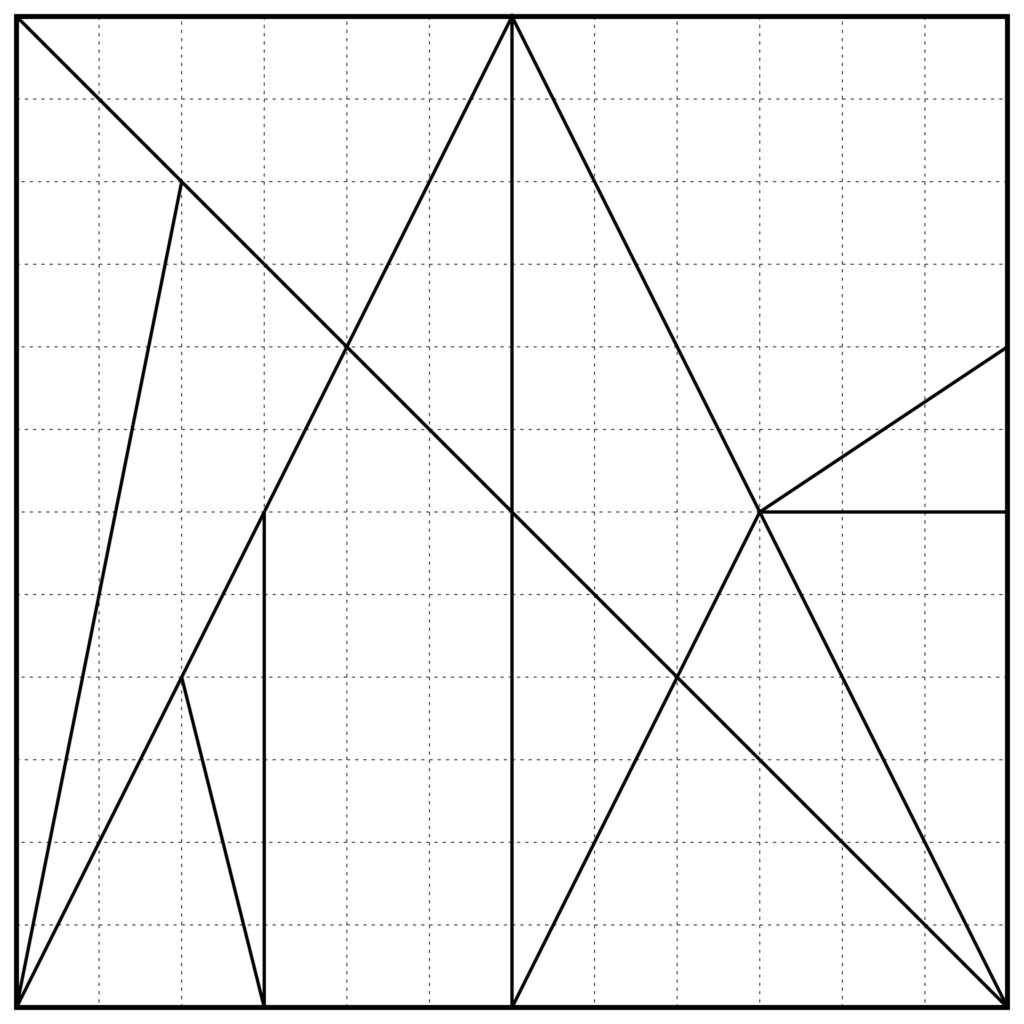
The geometric design of the stomachion diagram The division of the square according to the indications of an Arabic manuscript description: stomachion of Archimedes, with a 1/12 grid, author: Hagen von Eitzen, copyright: public domain – This image reproduces the Graeco-Roman stomachion square according to the proportions provided by a 17th c. manuscript in the […]
3D Model Embedded in the Greco-Roman Anatomical Atlas
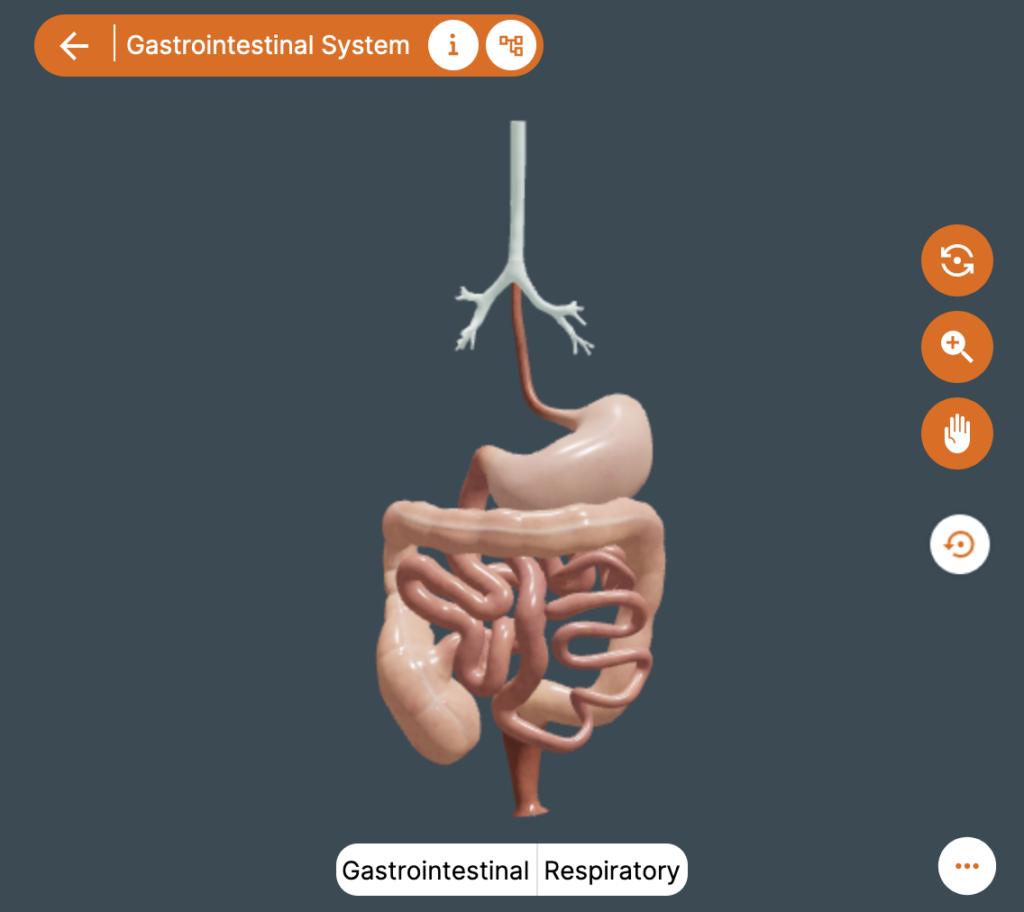
3D Model Embedded in the Greco-Roman Anatomical Atlas Copyright: ATLOMY (ERC StG GA 852550) Hebrew University of Jerusalem – Step into the Atlas and use it to explore the model and to learn about Aristotle’s ideas of the anatomy of the digestive system and about his anatomical terminology. You might recognize some terms! You will see […]
The 3D Model of the Digestive System according to Aristotle
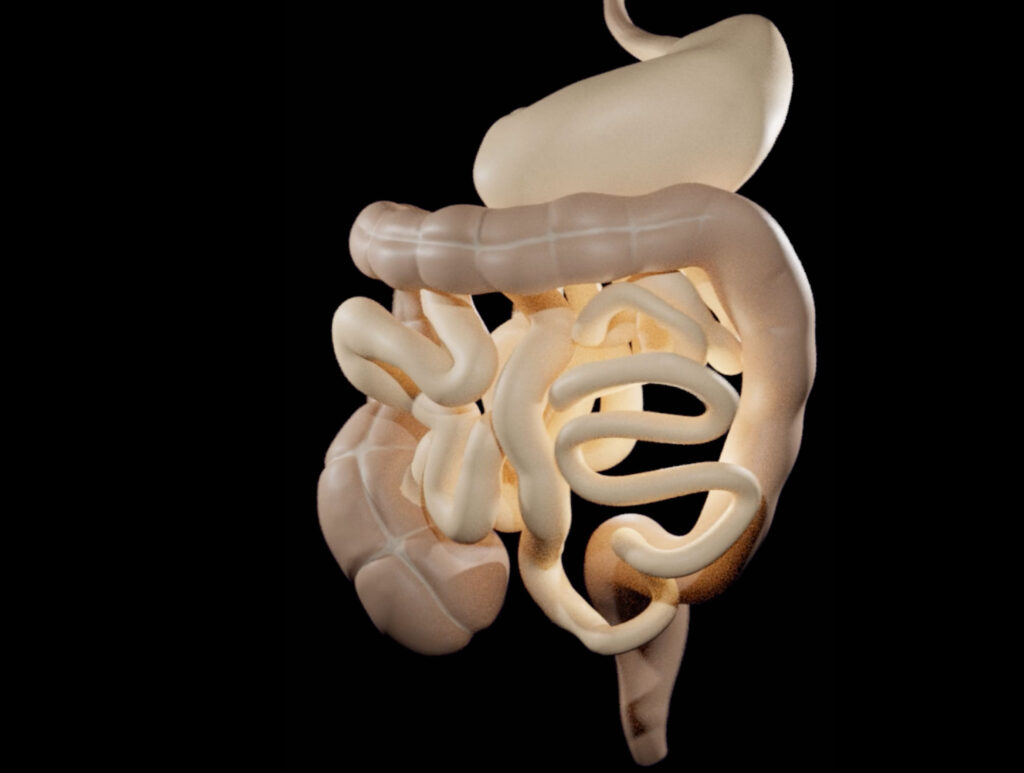
https://comparative-guts.net/wp-content/uploads/2023/02/Atlomy-Exhibit-4_2.mp4 The 3D Model of the Digestive System according to Aristotle Copyright: ATLOMY (ERC StG GA 852550) Hebrew University of Jerusalem – This 3-D model of the stomach and the intestines presents ATLOMY’s interpretation of the ancient text. While it might not be evident at first sight, this model differs from contemporary models of the […]
3D Modelling of the Guts according to Aristotle
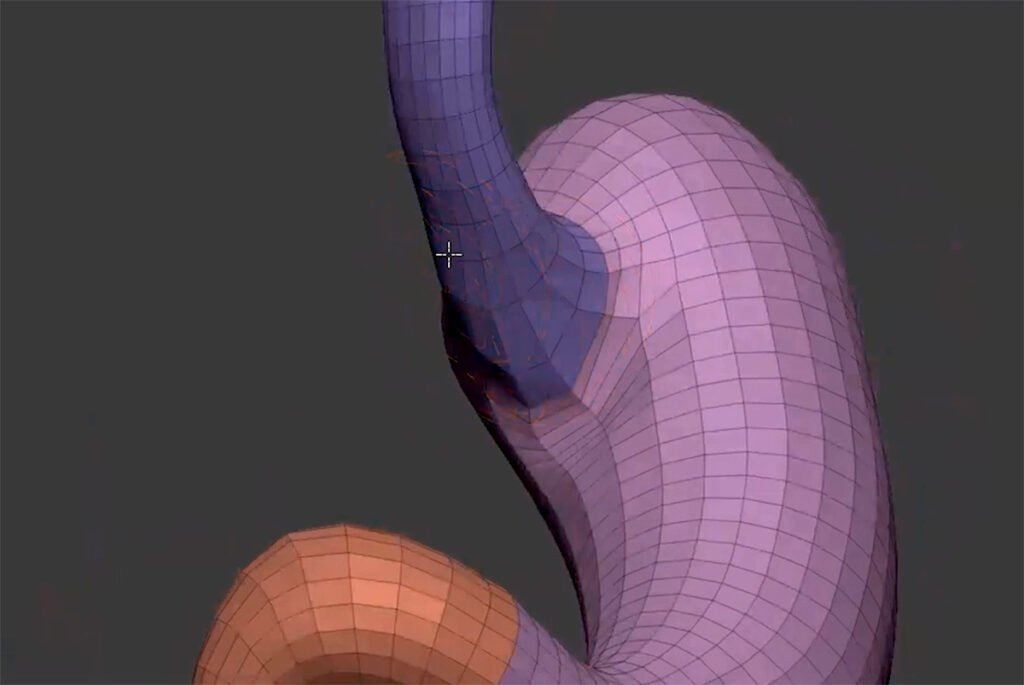
https://comparative-guts.net/wp-content/uploads/2023/02/Atlomy-Exhibit-3_1.mp4 3D Modelling of the Guts according to Aristotle Copyright: ATLOMY (ERC StG GA 852550) Hebrew University of Jerusalem – The next stage towards a visual reconstruction of Aristotle’s conception of guts is creating the 3D model. Based on the Table of Instructions the modellers use 3D-modelling software to create the model: from an initial […]
From Text to Model: The Guts according to Aristotle
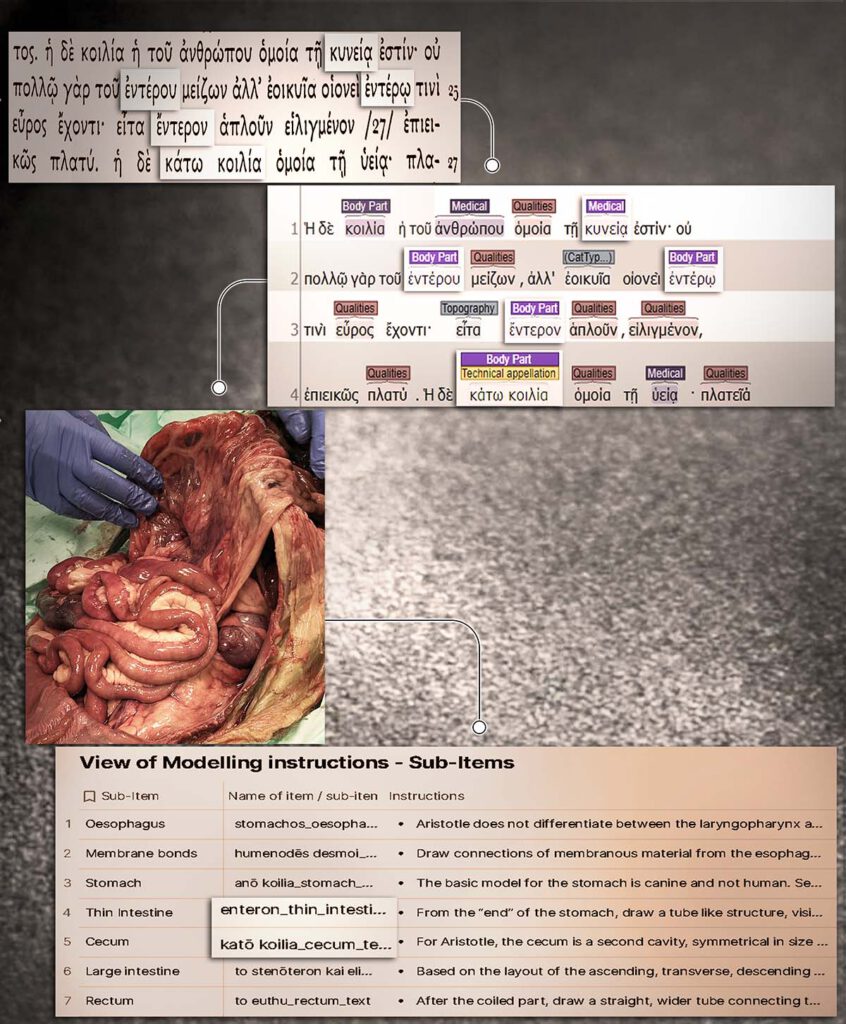
From Text to Model: The Guts according to Aristotle Copyright: ATLOMY (ERC StG GA 852550) Hebrew University of Jerusalem – A depiction of the first stages towards creating a 3D model of the human guts as described in Aristotle’s treatise Inquiries on Animals. The interdisciplinary team facilitates a unique analysis which bridges the gap between […]
From Observation to Text: The Guts according to Aristotle

From Observation to Text: The Guts according to Aristotle Copyright: ATLOMY (ERC StG GA 852550) Hebrew University of Jerusalem Bronze retractor, Roman, 1-100 CE. Science Museum, London. Attribution 4.0. International (CC BY 4.0) http://www.internetculturale.it/ – Sacrificial rituals were a common means to observe and learn about internal anatomy in ancient Greece. Aristotle investigated the body […]
Red-figured terracotta krater
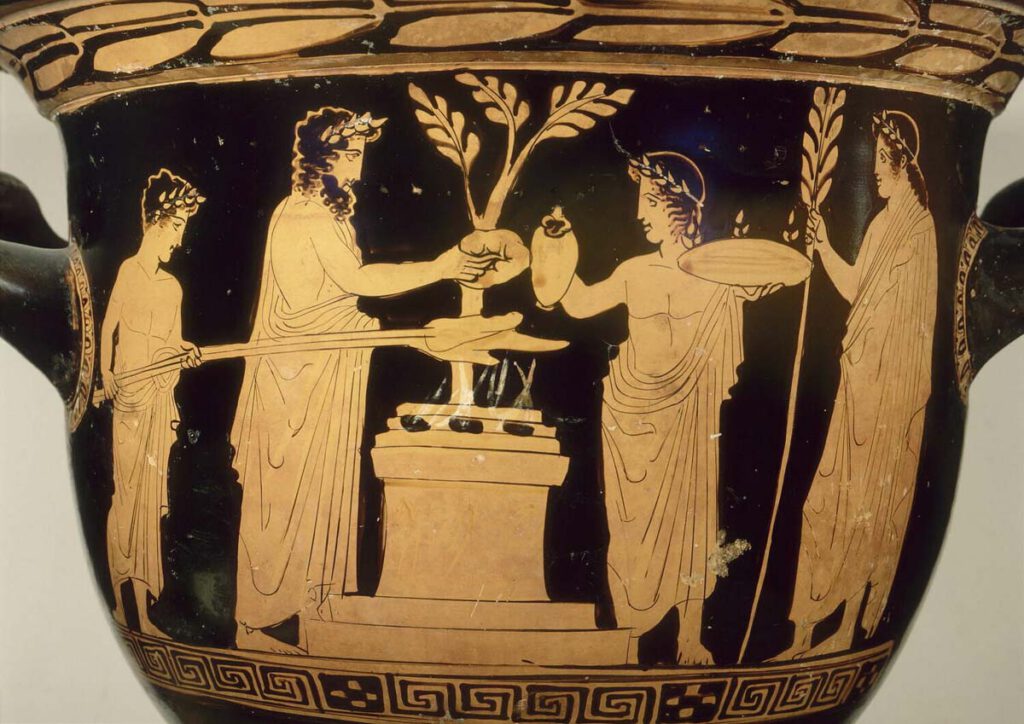
Red-figured terracotta bell-krater – Vessel for mixing wine and water, late 5th century BCE, with four figures and altar smoking with knisa. The boy on the left is holding skewered splanchna and roasting them on the fire. These would produce a complex odour profile including meaty, fatty and smokey odours. A man to the right […]
Compounds in the environment following removal of animal guts

Odour-contributing compound Precursor in the body (a) Oct-1-en-3 one Fatty acids (b) Skatole Tryptophan (c) Ammonia Urea (d) Putrescine Ornithine (e) Cadaverine Lysine (f) Furfural(g) HMF Glucose (h) 2,5-Dimethylpyrazine(i) 2-Acetylpyridine GlycineAlanine Compounds in the environment following removal of animal guts – Compounds in the environment following removal of animal guts that contribute to perception of […]
Red-figured terracotta bell-krater
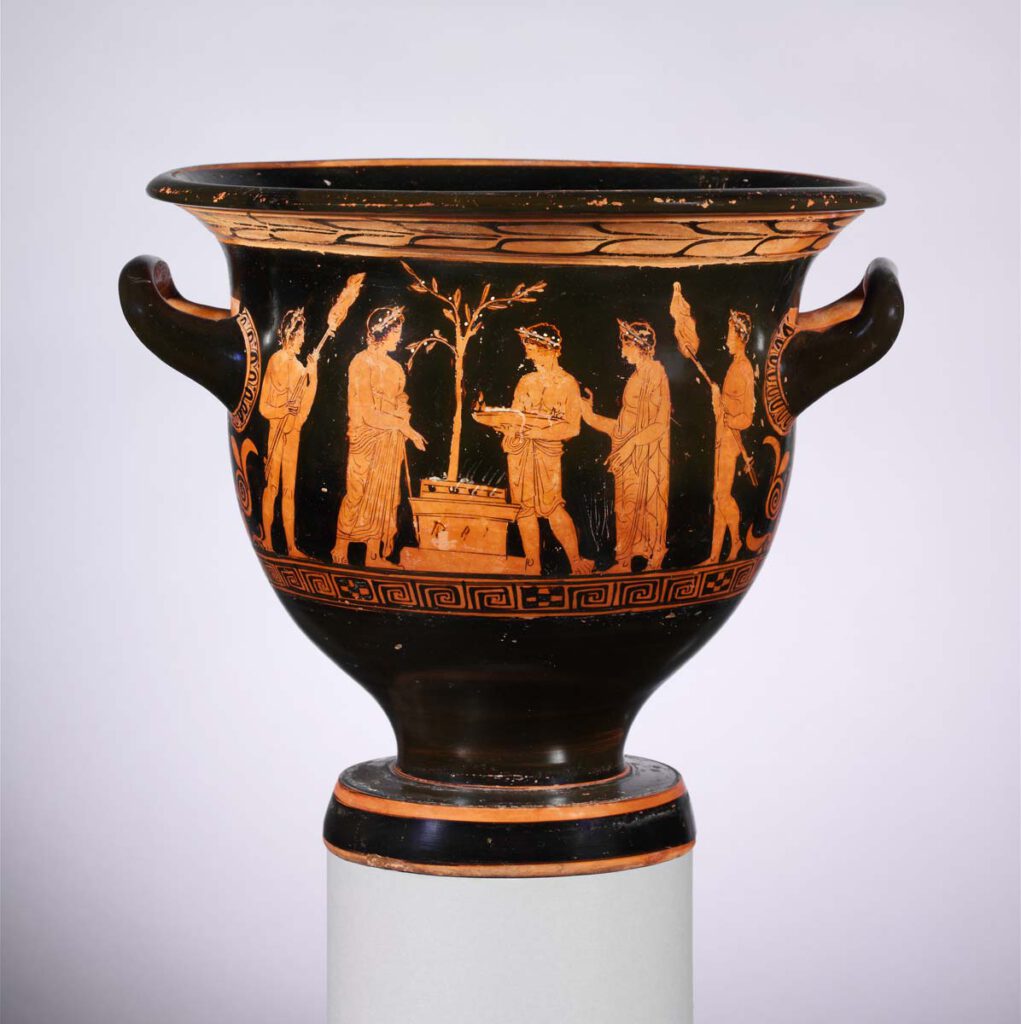
Red-figured terracotta bell-krater – Vessel for mixing wine and water, attributed to the Nikias Painter, late 5th century BCE, with three youths preparing meat offering, altar stacked with burning wood and smoking with knisa. Attendants on either side carry skewers likely holding viscera. The viscera would release putrescine and cadaverine, whose scent is characterised as […]
